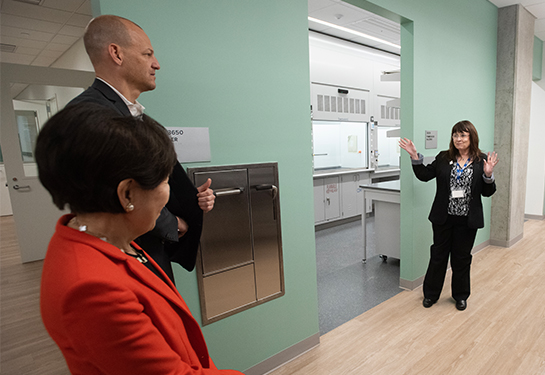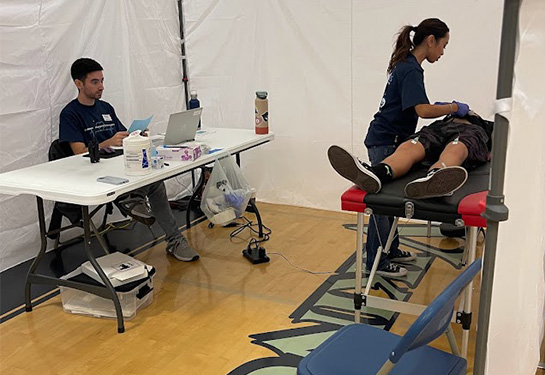Portable MRI device reduces time for diagnosing traumatic brain injuries
UC Davis Health is first hospital in Northern California to utilize Swoop Portable MR Imaging system
A new portable magnetic resonance imaging (MRI) device is helping UC Davis Health providers make critical decisions about brain injuries more quickly. The tool is a welcome addition during National Brain Trauma Awareness Month, when brain health is top of mind.

The Swoop Portable MR Imaging system is the first portable MRI device cleared by the Food and Drug Administration. It was invented by Connecticut-based Hyperfine and UC Davis Medical Center is the first Northern California hospital to utilize it.
MRI uses a magnetic field, radio waves, and a computer to produce detailed pictures of the body’s internal structures. These clear and detailed images are more likely in some instances to identify and accurately characterize disease than other imaging methods. However, traditional fixed conventional MRI systems can be inconvenient and inaccessible for providers and patients—particularly when time is critical. This is especially true when it’s needed a diagnostic tool in time-sensitive settings such as intensive care units and emergency departments.
“What’s exciting about this product is that you can literally drive it to a patient bedside, plug it into a standard wall outlet, control it with an iPad®, and get images of the patient’s brain in minutes,” said Elizabeth Morris, chair of Radiology. “This reduces the time it takes to make a diagnosis and is less stressful on the patient.”
For patients too unstable to transport, the Portable MR Imaging system allows care teams to meet the patient where they are. Plus, bringing this life-saving diagnostic tool straight to the patient also holds the promise of faster diagnoses and hopefully improved outcomes: something especially critical when every minute counts for those who have experienced a brain injury or stroke.
“Portable MRI technology will not only improve timeliness and access to neuroimaging for our critically ill patients but will also improve safety of these patients, as almost 40% of brain injured patients experience complications during transport including to a fixed MR scanner,” said Matthew Bobinski, director of MRI and chief of the Division of Neuroradiology.
Portable MRI technology will revolutionize access for a group of critical ICU patients and will add to our existing leading-edge fleet of scanners.” —Aleksey Shcherbakov
The portable device was specially designed to still take advantage of the powerful soft-tissue imaging properties provided by the magnetic fields of a fixed MRI. But it’s also workable in environments like the ICU and emergency department where patients are often intubated, connected to life-support equipment, and otherwise surrounded by metal objects.
“UC Davis patients and clinicians deserve the highest quality level of care and service,” said Aleksey Shcherbakov, radiology supervisor of MRI Services. “Portable MRI technology will revolutionize access for a group of critical ICU patients and will add to our existing leading-edge fleet of scanners. This marks another step on the path to establishing UC Davis Health Radiology as a regional leader in medical imaging.”
UC Davis Health plans to soon begin using the Portable MR Imaging system in the Department of Emergency Medicine to quickly diagnose trauma patients without needing to move them to another department for imaging.
“UC Davis Health is a thought-leading institution, and their adoption of the Swoop system has been a beneficial addition to the hospital’s arsenal of diagnostic tools,” said Khan Siddiqui, chief medical officer of Hyperfine. “The system not only enables clinicians to provide excellent medical care quickly, but it also delivers a completely new, convenient, and comfortable MR imaging experience.”



